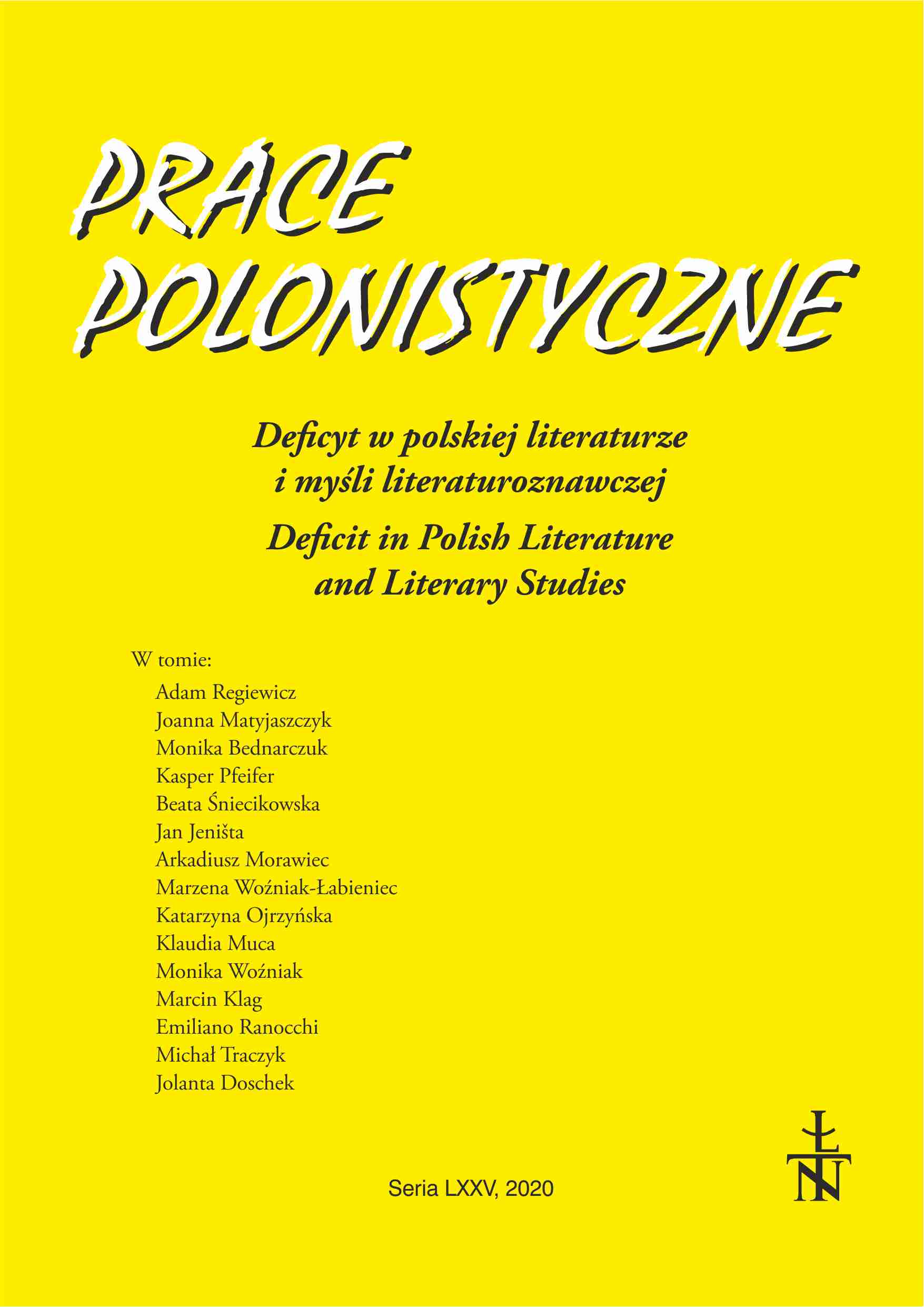WALIZKA TUWIMA. RZECZ O TUWIMIE I O LIBERATURZE / Tuwim’s Suitcase. Tuwim and Liberature
DOI:
https://doi.org/10.26485/PP/2020/75/13Keywords:
Julian Tuwim; liberature; visual poetryAbstract
The article explores the connection between Julian Tuwim’s oeuvre and the concept of liberature. Coined by Zenon Fajfer in the 1990s, the term liberature accentuates the visual and spatial aspects of a literary text and highlights the fact that the meaning of a text depends on its material form. The author reconstructs Tuwim’s approach to formal experimentation related to the spatial and visual aspects of a text. To this aim, he analyses Pegaz dęba (written before 1939, first published in 1950, and republished in 2008), whose manuscript survived the war in a suitcase buried close to Tuwim’s house. The book is a collection and study of various genres and other forms of artistic expression which showed liberary features long before the term was coined. Ranocchi argues that although Tuwim treated what is now called liberature as an insignificant and marginal curiosity, he nevertheless defined it as an area of interest for both literary historians and writers. Thus, Pegaz dęba can be seen as the first Polish attempt to systematize the literary works that have more recently been labelled as liberature and as such won critical acclaim.
References
Bazarnik Katarzyna. 2007. Liberature. A New Literary Genre? W: Insistent Images. Red. Elżbieta Tabakowska, Christina Ljungberg, Olga Fischer. Amsterdam–Philadelphia: John Benjamins. ISBN: 978-90-2724-341-6. S. 191–208.
Bazarnik Katarzyna. 2011. Liberatura, czyli o powstawaniu gatunków (literackich). W: Od liberatury do e-literatury. Red. Eugeniusz Wilk, Monika Górska-Olesińska. Opole: Wydawnictwo Uniwersytetu Opolskiego. ISBN: 978-83-7395-440-3. S. 15–27.
Fajfer Zenon. 2010. Liberatura czyli literatura totalna. Teksty zebrane z lat 1999–2009. Red. Katarzyna Bazarnik. Kraków: Korporacja Ha!art. ISBN: 978-83-64057-77-9.
Fajfer Zenon, Bazarnik Katarzyna. 2000/2009. Oka-leczenie. Kraków: Wydawnictwo Ha!art. ISBN: 978-83-6140-722-5.
Kalaga Wojciech. 2010. Tekst hybrydyczny. Polifonie i aporie doświadczenia wizualnego. W: Kulturowe wizualizacje doświadczenia. Red. Włodzimierz Bolecki, Adam Dziadek. Warszawa: Instytut Badań Literackich PAN. ISBN: 978-83-6155-231-4. S. 74–104.
Kochanowski Jan. 1998. Fraszki. Oprac. Janusz Pelc. Wyd. 3. Wrocław: Ossolineum. ISBN: 83-04-04411-0.
Perec Georges. 1969. La Disparition. Paris: Denoël.
Potocki Wacław. 1987. Dzieła. Oprac. Leszek Kukulski. T. 2. Ogród nie plewiony i inne utwory z lat 1677–1695. Warszawa PIW. ISBN: 83-06-01272-0.
Przybyszewska Agnieszka. 2007. Liberatura. „Zagadnienia Rodzajów Literackich” 2007, nr 1–2. ISSN: 0084-4446. S. 255–258.
Przybyszewska Agnieszka. 2010. Dziesięć lat liberatury. (Historia w dużym skrócie). W: Zenon Fajfer. Liberatura czyli literatura totalna. Teksty zebrane z lat 1999–2009. Red. Katarzyna Bazarnik. Kraków: Korporacja Ha!art. ISBN: 978-83-64057-77-9. S. 164–173.
Przybyszewska Agnieszka. 2012. Liberatura/literatura totalna. W: Słownik rodzajów i gatunków literackich. Red. Grzegorz Gazda. Warszawa: Wydawnictwo Naukowe PWN. ISBN: 978-83-01-17241-1. S. 521–526.
Ranocchi Emiliano. 2012. Liberatura między awangardą i tradycją. Bilans pierwszego dziesięciolecia. W: Liberatura, e-literatura i… Remiksy, remediacje, redefinicje. Red. Monika Górska-Olesińska. Opole: Wydawnictwo Uniwersytetu Opolskiego. ISBN: 978-83-7395-515-8. S. 19–36.
Rypson Piotr. 1989. Obraz słowa. Historia poezji wizualnej. Warszawa: Akademia Ruchu.
Tomassucci Giovanna. 2010. Julian Tuwim: il primo futurista? W: Gli altri futurismi. Futurismi e movimenti d’avanguardia in Russia, Polonia, Cecoslovacchia, Bulgaria e Romania. Atti del convegno internazionale, Pisa, 5 giugno 2009. Red. Giovanna Tomassucci, Massimo Tria. Pisa: Plus–Pisa University Press. ISBN: 978-88-8492-758-3. S. 93–112.
Tuwim Julian. 2008. Pegaz dęba. Warszawa: Iskry. ISBN: 978-83-2440-079-9.



